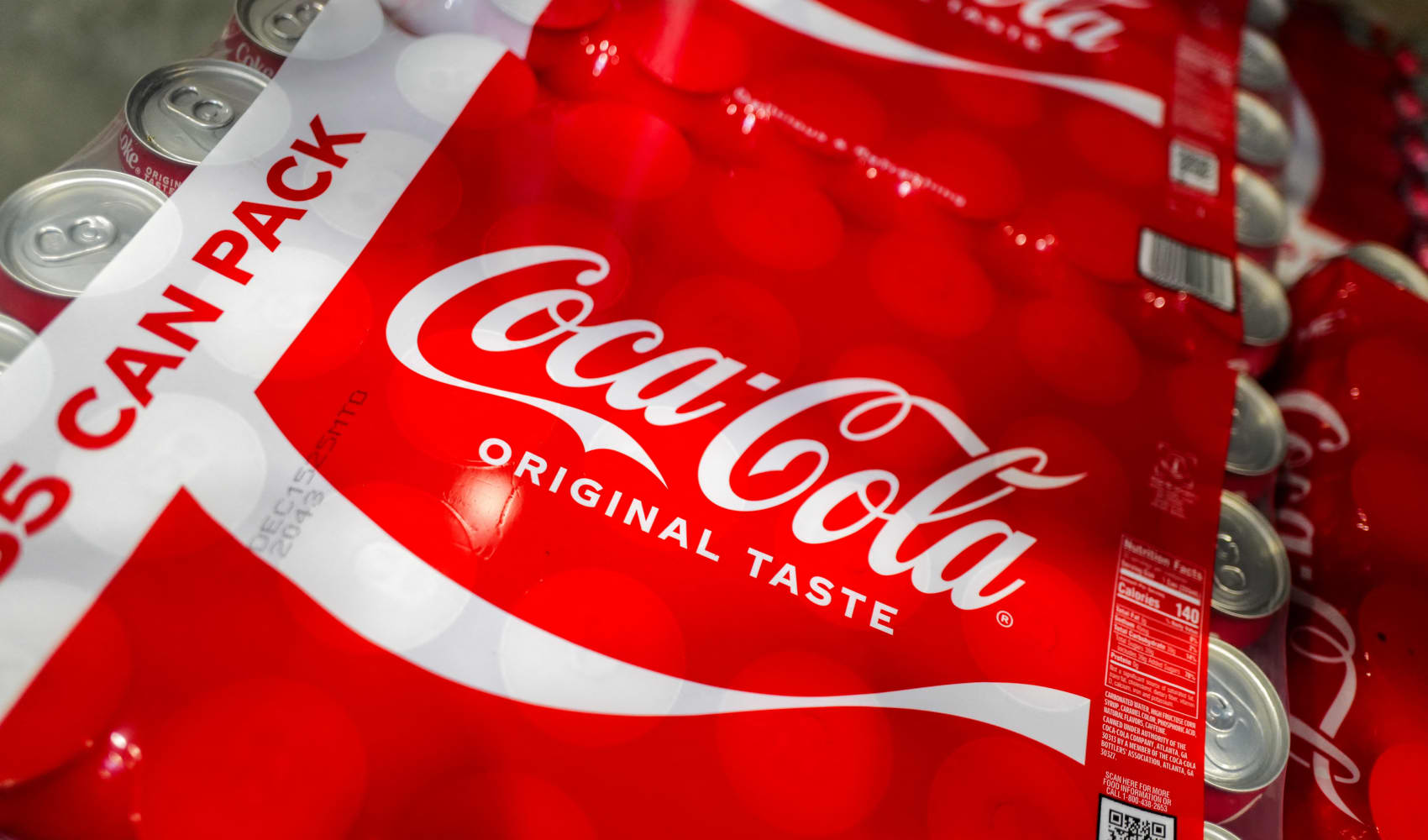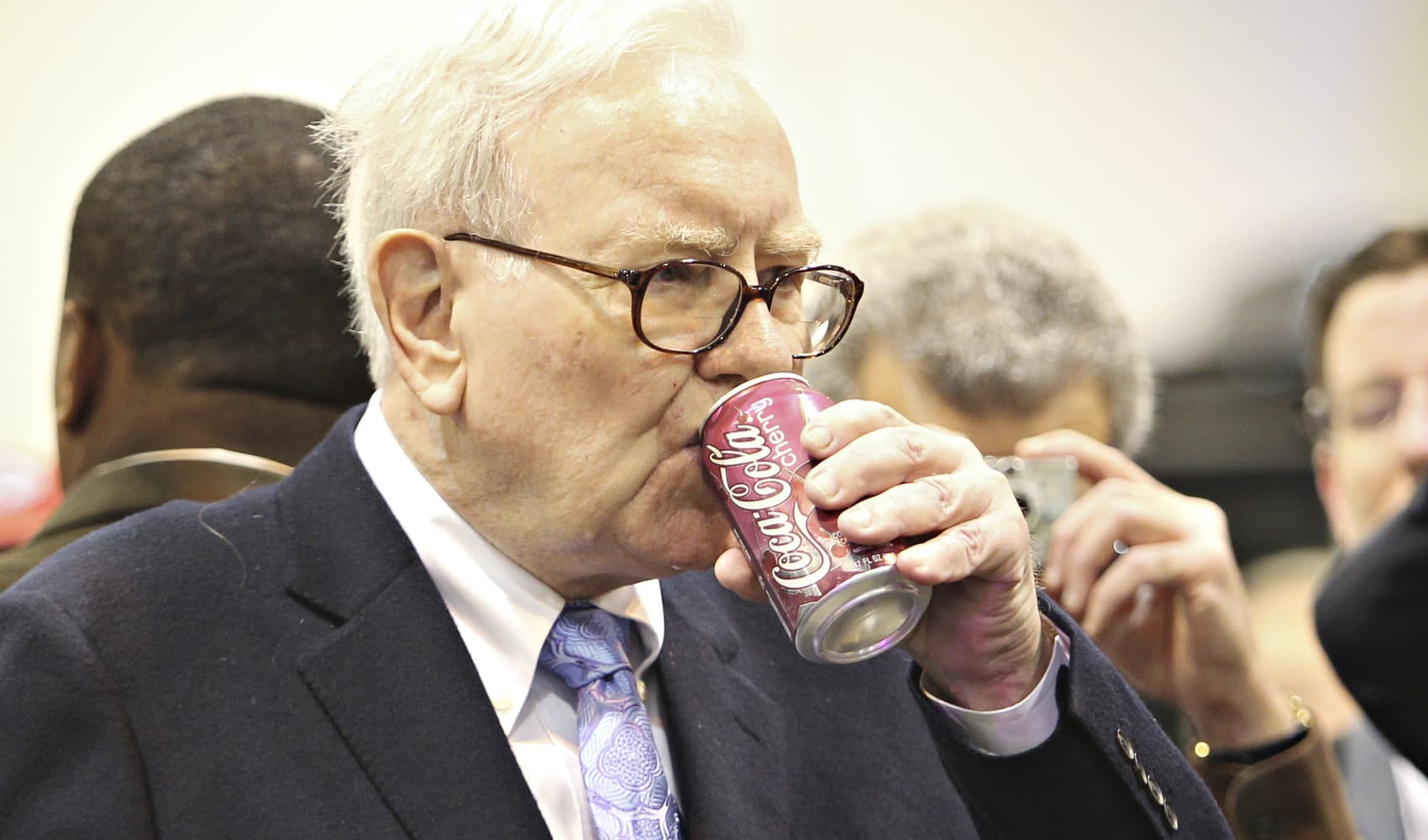Coke Defies Odds: 'Manageable' Tariffs After Pepsi Lowers Outlook
Coke Stays Strong: Tariff Disruptions 'Manageable' After Pepsi's Outlook Cut
Introduction: Fizzing with Confidence While Others Falter
The world of beverages is a battlefield, a sugary war waged for our taste buds and our wallets. And right now, Coca-Cola appears to be winning a major skirmish. While rival PepsiCo recently trimmed its full-year forecast, citing economic headwinds, Coke is standing tall, reaffirming its own optimistic outlook. What's their secret? Are they just lucky, or is there a more strategic recipe at play? Let's dive in and see why Coke believes tariff disruptions will be "manageable," even as others feel the pinch.
Coke's Q1 Victory: A Sweet Start to the Year
Coca-Cola didn't just survive the first quarter of the year; it thrived. The company reported first-quarter earnings and revenue that surpassed Wall Street's expectations, setting a positive tone for the rest of 2024. How did they pull it off? Strong performance in key emerging markets seems to be a major factor.
Emerging Market Magic: India, China, and Brazil
Coke's success wasn't evenly distributed across the globe. Instead, growth was heavily fueled by robust performance in India, China, and Brazil. Unit case volume grew 2% in the quarter, largely thanks to these booming economies. Think of these countries as Coke's MVPs, consistently delivering winning results. But how do they differ from the rest of the market?
Sticking to the Plan: The 2025 Vision Remains Intact
Despite the global economic uncertainty, Coke is holding firm to its long-term goals. The company is still anticipating that its organic revenue will grow 5% to 6% and comparable earnings per share will increase 2% to 3% by 2025. This unwavering confidence suggests a strong belief in their underlying business strategy and resilience.
Pepsi's Pain vs. Coke's Calm: What's the Difference?
PepsiCo's decision to lower its forecast highlights the challenges facing the beverage industry. So, why is Coke seemingly unfazed? The key lies in the structure of their operations.
"Primarily Local": Coke's Decentralized Advantage
Coke attributes its resilience to its "primarily local" operations. What does this mean? Think of Coke as a global brand with a local soul. While the Coca-Cola brand is universally recognized, its operations are often managed on a regional or country-specific basis. This decentralization allows them to adapt more quickly to local market conditions and mitigate the impact of global disruptions.
Tariffs and Trade Wars: A Manageable Threat?
One of the biggest concerns for global companies is the ongoing trade conflicts, particularly the tariffs imposed on various goods. These tariffs can significantly increase costs and disrupt supply chains. Coke acknowledges the potential for cost increases, particularly for commodities like aluminum and orange juice.
Aluminum and Orange Juice: The Price of Globalization
Aluminum, used for cans, and orange juice, a key ingredient in some of Coke's popular beverages, are both vulnerable to price fluctuations due to tariffs. However, Coke believes these increases will be "manageable." How? They likely have strategies in place to absorb some of the costs, pass some on to consumers, and explore alternative sourcing options.
Strategic Pricing and Cost Management: The Secret Sauce
Coke's ability to weather the storm likely stems from a combination of factors, including:
- Strategic Pricing: Carefully adjusting prices to balance profitability with consumer demand.
- Cost Management: Streamlining operations and finding efficiencies to reduce expenses.
- Supply Chain Diversification: Sourcing materials from multiple locations to reduce reliance on any single source.
Innovation and New Products: Keeping it Fresh
Coke isn't just relying on its classic beverages. The company is constantly innovating and introducing new products to cater to changing consumer preferences. Think about the rise of sparkling water, healthier alternatives, and flavored variations – Coke is actively participating in these trends.
Beyond the Classic: Diversifying the Portfolio
From sugar-free options to flavored sparkling waters, Coke is expanding its portfolio to appeal to a wider range of consumers. This diversification not only helps them capture new market share but also reduces their reliance on any single product category.
Marketing Magic: Building Brand Loyalty
Coke has always been a master of marketing. Their iconic advertising campaigns have created a strong emotional connection with consumers, fostering brand loyalty that transcends price fluctuations and economic downturns. Can marketing really make that much difference?
The Power of Emotion: Connecting with Consumers
Coke's marketing campaigns often focus on themes of happiness, togetherness, and shared experiences. This emotional connection helps to build brand loyalty and differentiate Coke from its competitors.
Looking Ahead: Challenges and Opportunities
While Coke's current outlook is positive, the company still faces significant challenges. Economic uncertainty, changing consumer preferences, and increased competition all pose potential threats. However, these challenges also present opportunities for Coke to innovate, adapt, and further strengthen its position in the market.
The Global Beverage Landscape: A Constantly Evolving Battlefield
The beverage industry is a dynamic and competitive landscape. Companies must constantly adapt to changing consumer preferences, technological advancements, and economic conditions to survive and thrive. Coke's ability to navigate these challenges will be crucial to its long-term success.
Investment Strategy: Staying Ahead of the Curve
Coke's investment strategy plays a critical role in its ability to maintain its competitive edge. Investing in research and development, new technologies, and strategic partnerships allows the company to stay ahead of the curve and capitalize on emerging opportunities.
Sustainability Initiatives: Building a Better Future
Consumers are increasingly concerned about the environmental impact of the products they consume. Coke is responding to this trend by investing in sustainability initiatives, such as reducing its carbon footprint, conserving water resources, and promoting recycling. These efforts not only help to protect the environment but also enhance Coke's brand image and appeal to environmentally conscious consumers.
Conclusion: Coke's Optimism Rooted in Resilience
Coca-Cola's ability to maintain its full-year forecast while PepsiCo adjusted theirs speaks volumes about Coke's resilient business model and strategic approach. Their decentralized operations, strong performance in emerging markets, and effective cost management strategies all contribute to their ability to navigate global economic challenges. While tariffs and trade wars remain a concern, Coke's management believes the impact will be "manageable," and they are well-positioned to continue delivering solid results. So, is Coke invincible? Probably not. But they certainly seem to have a secret formula for success that's working for them right now.
Frequently Asked Questions
Here are some frequently asked questions about Coca-Cola's recent performance and outlook:
- What were the key factors behind Coca-Cola's strong first-quarter earnings?
Strong growth in emerging markets, particularly India, China, and Brazil, was a major contributor. Strategic pricing, cost management, and ongoing innovation also played a role.
- Why is Coca-Cola more confident about tariff disruptions than PepsiCo?
Coca-Cola's "primarily local" operations allow them to adapt more quickly to regional market conditions and mitigate the impact of global disruptions. PepsiCo may be more reliant on global supply chains or may be facing different challenges in specific markets.
- What are the biggest challenges facing Coca-Cola in the coming years?
Economic uncertainty, changing consumer preferences (particularly the shift towards healthier beverages), and increased competition remain significant challenges.
- How is Coca-Cola adapting to the growing demand for healthier beverages?
Coca-Cola is diversifying its product portfolio with sugar-free options, flavored sparkling waters, and other healthier alternatives.
- What sustainability initiatives is Coca-Cola undertaking?
Coca-Cola is investing in reducing its carbon footprint, conserving water resources, promoting recycling, and using more sustainable packaging materials.

